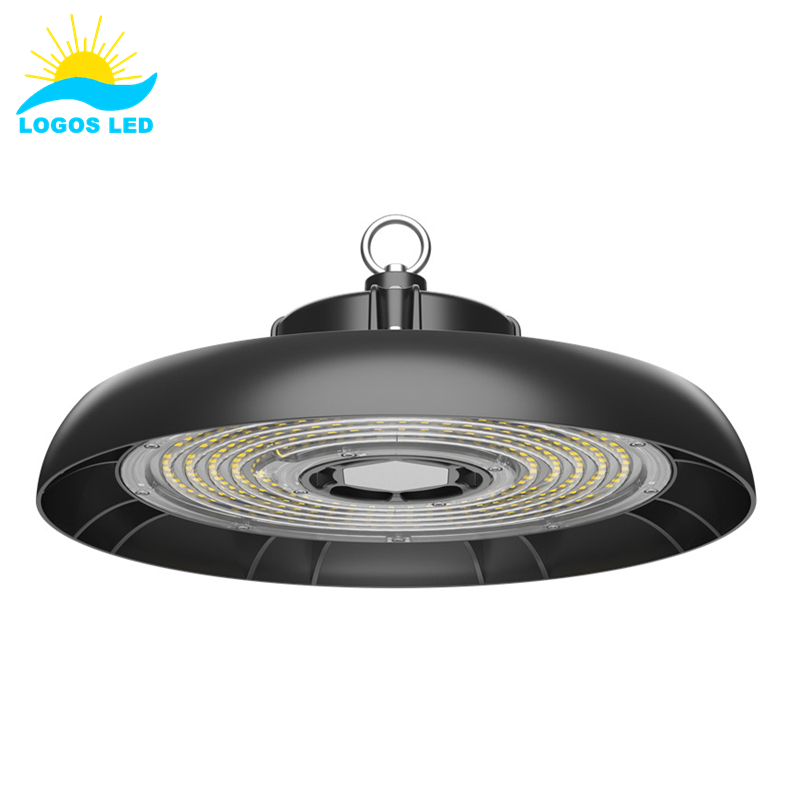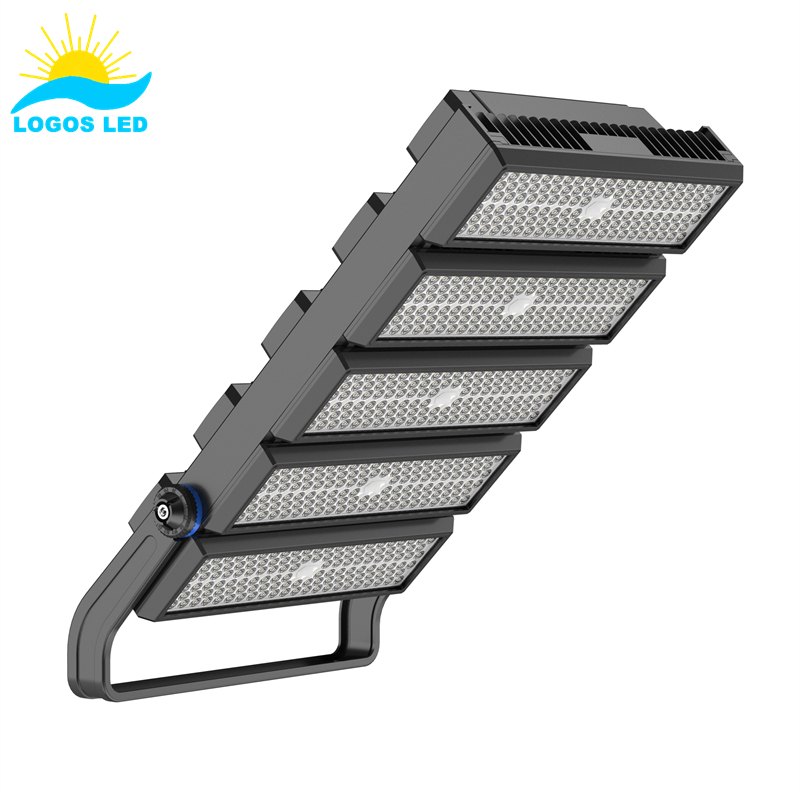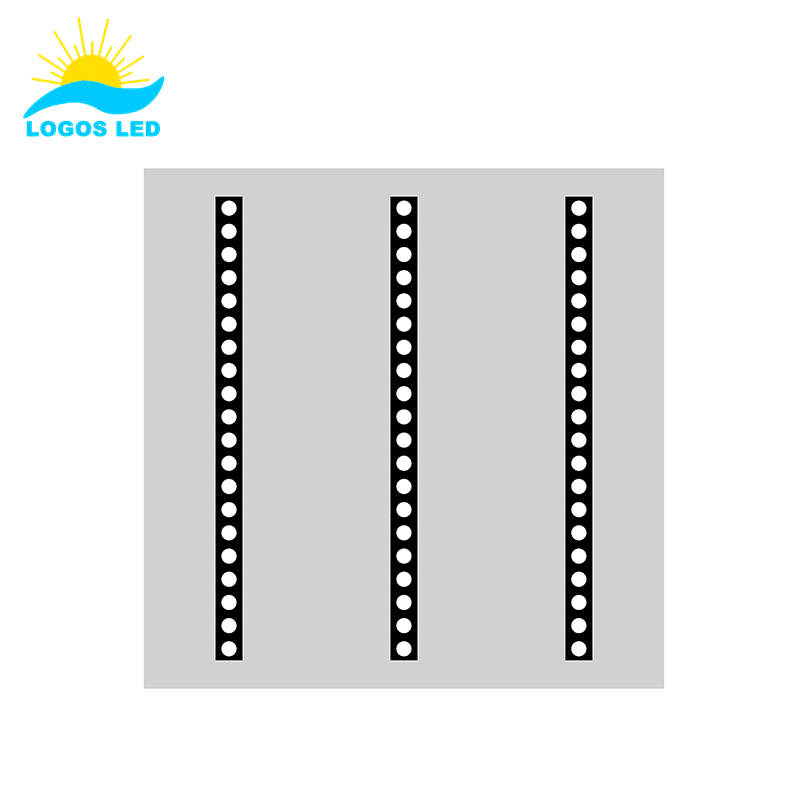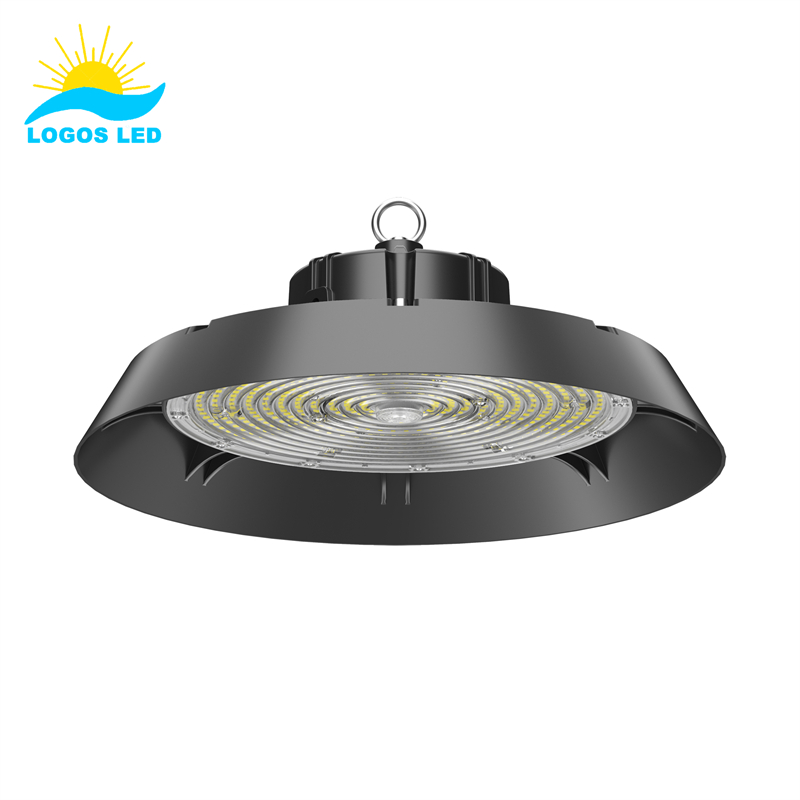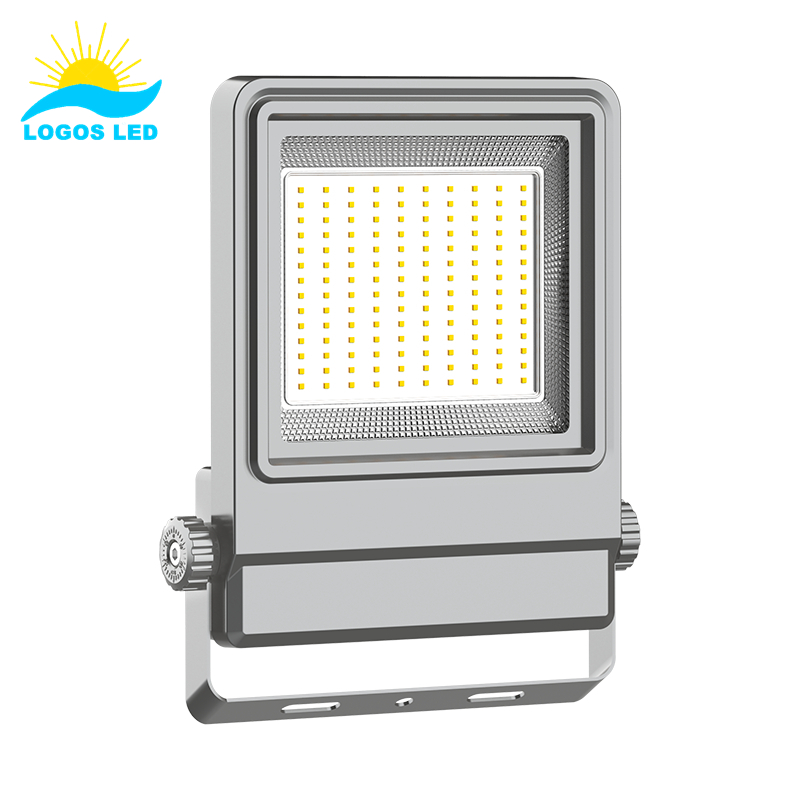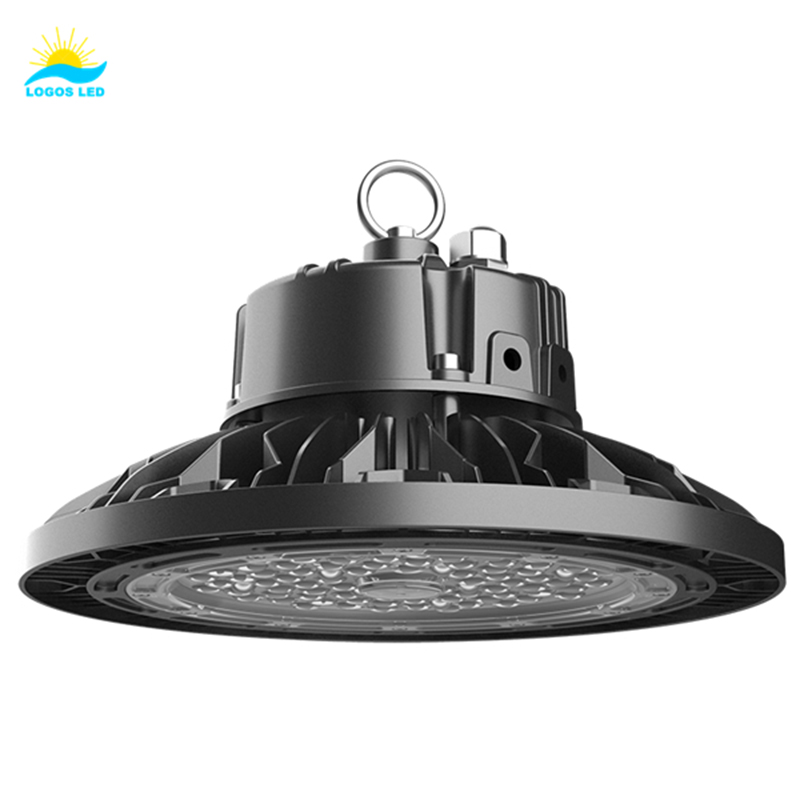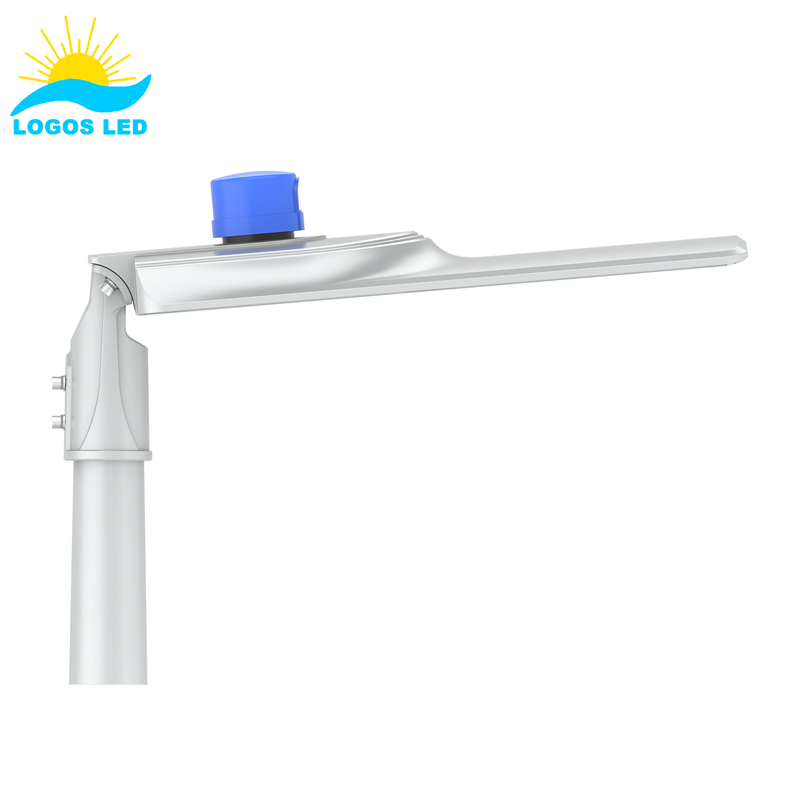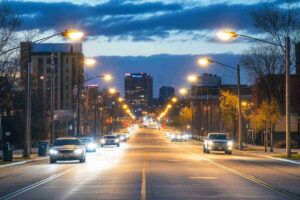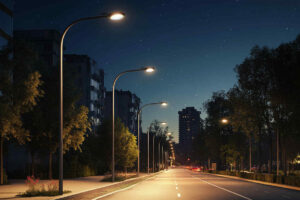Choosing the wrong LED lighting fixtures leads to poor brightness, high costs, and wasted time. The right fixtures save energy, last longer, and deliver the results you need.
When choosing LED lighting fixtures, it’s important to match the fixture type to your space, function, and brightness needs. Look at lumen output, wattage, beam angle, color temperature, and controls like dimming or sensors. Whether it’s for a shop, warehouse, or garage ceiling, picking the right LED ensures optimal performance and long-term savings. Don’t just grab any light—understand what you’re buying and why it matters.
Let’s dive deeper and make sure you don’t waste a single watt.
Table of Contents
Types of LED Light Fixtures
LED lighting comes in many forms, and each fixture type is built for a specific job. Choosing the right one depends on your space, ceiling height, environment, and lighting goals. Here are the most common types of LED fixtures and where they work best:
LED Shop Lights
These are long, linear fixtures typically used in garages, workshops, and storage areas. They’re easy to install, provide broad light coverage, and are ideal for task lighting over workbenches or tools. Most are surface-mounted or suspended from the ceiling.
High Bay LED Lights
Designed for tall ceilings—usually 6 meters (20 feet) or higher—these lights are used in large indoor spaces like warehouses, manufacturing facilities, and gymnasiums. They deliver powerful, even lighting from high above and come in both UFO and linear shapes.
Flood Lights
Flood lights are made for outdoor use. They illuminate wide areas like building exteriors, parking lots, sports courts, and construction zones. Their beam angles can be narrow or wide depending on whether you need focused or general lighting.
Panel Lights
Panel lights are sleek, flat fixtures recessed into drop ceilings. They’re common in office spaces, healthcare centers, and labs where uniform, glare-free light is important. They also come in edge-lit or backlit versions for different lighting effects.
Downlights
These are compact fixtures mounted into ceilings to provide general or accent lighting. You’ll find them in both commercial and residential settings—offices, hotels, hallways, and kitchens. They’re great for clean, modern lighting without bulky fixtures.
Vapor Tight Fixtures
Built to withstand moisture, dust, and corrosion, vapor tight fixtures are sealed and rugged. They’re ideal for car washes, food processing plants, tunnels, and outdoor covered walkways. These fixtures protect the internal components from harsh environments.
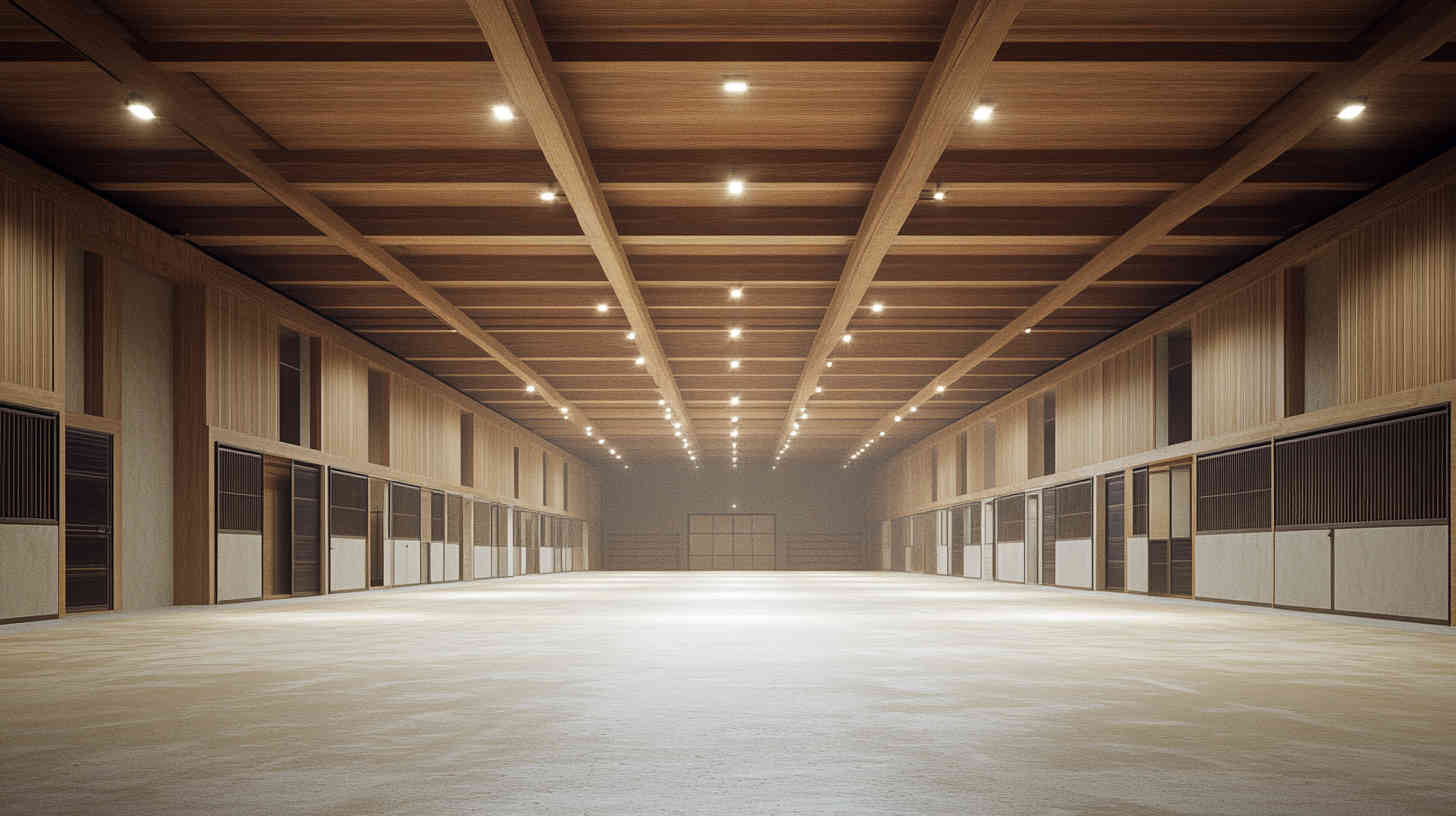
Options Functions of LED Light Fixtures
LED light fixtures have evolved far beyond simple on/off switches. Today’s models come packed with smart features that improve energy efficiency, user comfort, and adaptability to different spaces. Here are the most useful options you should consider when selecting LED fixtures:
Dimming
Dimmable LED fixtures let you control brightness based on the time of day, task, or mood. This is especially useful in offices, restaurants, meeting rooms, or homes where lighting needs change throughout the day. Lowering brightness also saves energy and extends fixture life.
Motion Sensors
Motion-activated fixtures are perfect for areas with intermittent activity—like warehouses, corridors, stairwells, or restrooms. The light turns on automatically when movement is detected and turns off after a set period of inactivity. This reduces energy waste in unoccupied spaces.
Photocells
Photocell sensors detect natural light levels and automatically switch the LED light on at dusk and off at dawn. These are ideal for outdoor lighting—like parking lots, walkways, or building exteriors—where lights need to follow the day/night cycle without manual input.
Battery Backups
Also known as emergency LED drivers, these systems keep lights operating during a power outage. Battery backups are crucial in commercial buildings, hospitals, schools, and exit paths where lighting is required by safety codes. They typically provide at least 90 minutes of emergency illumination.
Tunable Colors
Tunable white fixtures (also called CCT tunable) allow you to adjust the color temperature from warm white (around 2700K) to cool daylight (around 6500K). This is helpful in retail, offices, or public spaces where lighting tone may need to shift for comfort, product display, or time-of-day effects.
Each of these functions enhances the usability, energy performance, and value of your LED lighting system. Choosing the right combination of features depends on your specific environment and lighting goals.
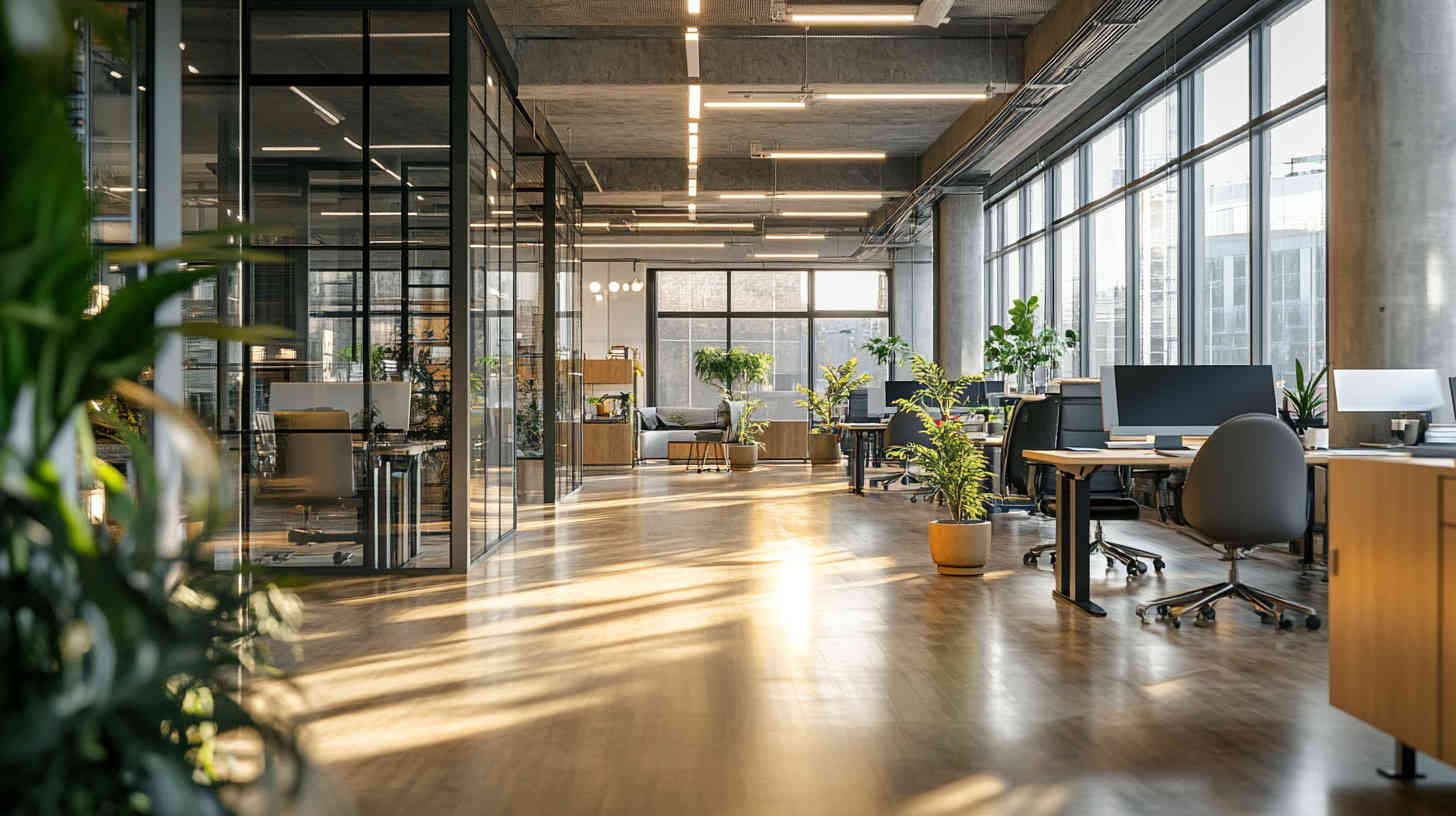
How to Check LED Before Buying?
Before you commit to any LED light, it’s important to go beyond the marketing claims. A well-informed check of key specifications ensures you’re buying a fixture that performs well, lasts long, and suits your space. Here’s what to look for:
Lumen Output
This is the actual measure of brightness. Don’t confuse it with wattage—lumens tell you how much visible light the fixture produces. Higher lumens mean a brighter light.
Wattage
Wattage tells you how much power the LED uses. A good LED will provide high lumens with low wattage. Look for lights that offer at least 120–150 lumens per watt for better efficiency.
Color Temperature
Measured in Kelvin (K), this defines the “tone” of the light:
– 2700K–3500K: Warm white (soft, cozy light)
– 3500K-4500K: Neutral white (balanced and clean)
– 4500K–6500K: Cool white or daylight (bright and crisp)
Choose based on the feel you want and the task the light needs to support.
CRI (Color Rendering Index)
CRI measures how accurately the light shows colors. For general use, a CRI of 80+ is good. For retail, art displays, or photography, go with 90+ to show true colors and fine details.
Beam Angle
The beam angle affects how the light spreads:
– Narrow beam (15°–40°): Great for spotlights or accent lighting
– Wide beam (60°–120°): Best for general area lighting like offices or warehouses
Match the angle to your space to avoid uneven lighting or glare.
Lifespan and Warranty
Quality LEDs last at least 50,000 hours. A solid 5-year warranty shows the manufacturer stands behind their product. Anything less might not hold up over time.
Bonus Tip: Ask for Documentation
Request photometric files (IES files), LM79/LM80 test reports, or actual third-party test data from your supplier. This helps confirm the specs are accurate and not just marketing fluff.
Checking these details upfront can save you time, money, and frustration later on—especially in large or commercial lighting projects.

How Many Watts Are Good for LED Lights?
When choosing LED lights, wattage helps estimate power consumption, but it’s not the full picture. LED efficiency means you get more brightness (lumens) with fewer watts compared to traditional lighting. The “right” wattage depends on the type of fixture and where it’s used.
General Wattage Guide by Application:
- Office Panel Lights:
Typically between 36–50 watts for a 2×2 or 2×4 panel. This range provides even, comfortable lighting for desks and work areas. -
LED Shop Lights:
Usually 40–80 watts, depending on how high the fixture is mounted and how bright the workspace needs to be. -
High Bay LED Lights:
Range from 100W to 250W, based on ceiling height and coverage area. - For 6–8 meter ceilings: 100W–150W
-
For 10–12 meter ceilings: 200W–250W
-
LED Flood Lights:
Wattage varies widely from 50W for small outdoor areas to 400W or more for stadiums and large parking lots.
Don’t Forget to Check Lumens
Wattage tells you how much power is used, but lumens tell you how bright the light is. A high-quality LED will deliver more lumens per watt.
For example:
– A 100W high bay LED should produce around 14,000–16,000 lumens.
– A 150W LED flood light might produce 21,000–24,000 lumens.
Final Tip
Always match the wattage and lumens to your specific lighting needs and installation height. And don’t forget to factor in beam angle and color temperature for a complete lighting plan.

Layout Designing for LED Light Fixtures
It’s not just about picking fixtures—it’s about placing them right. You need:
– Correct spacing to avoid shadows or dark spots
– Even distribution for comfort and efficiency
– Proper height and angle to maximize coverage
We use DIALux to simulate your layout before installation. That way, you’ll know exactly how many fixtures you need, where they go, and how they’ll perform.
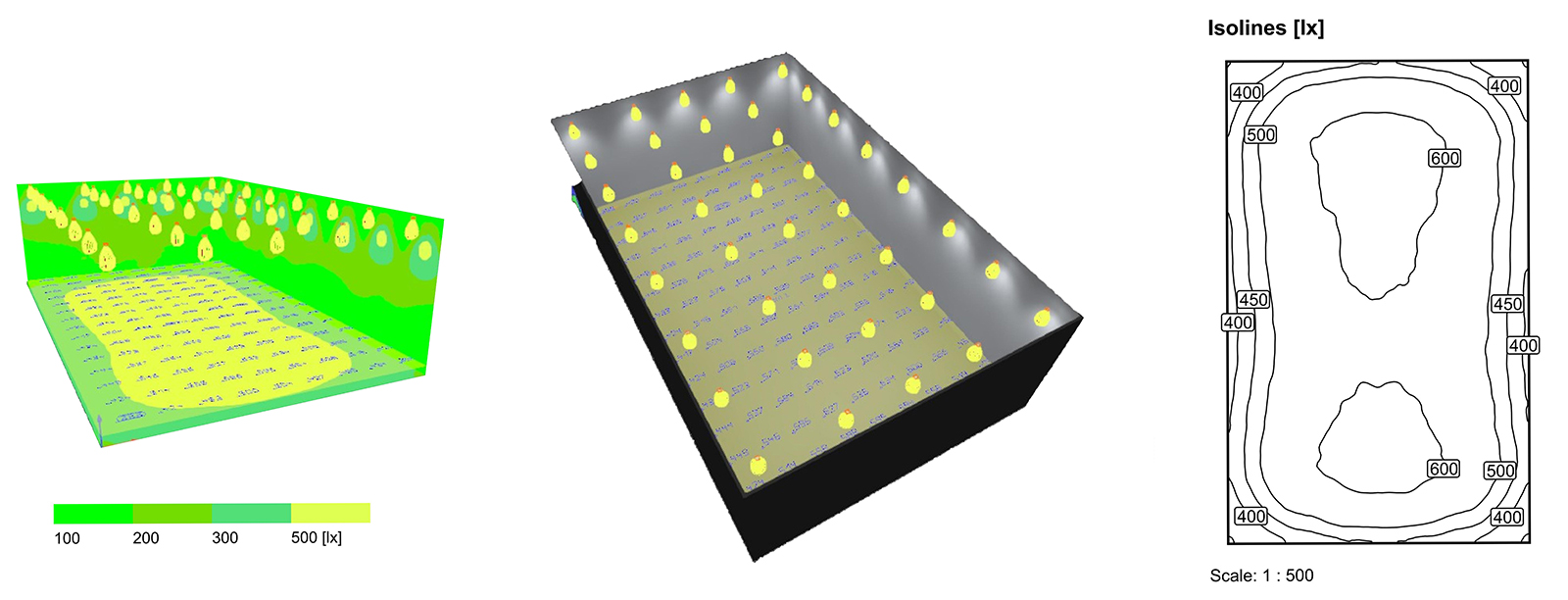
How to Choose a Light Fixture?
Choosing the right LED light fixture starts with understanding your space, your lighting goals, and the specs that matter most. Whether it’s a small office or a large industrial warehouse, asking the right questions helps you avoid costly mistakes and ensures the best performance.
How Do I Choose LED Size?
Start by looking at your mounting space and the area you need to light.
– Small rooms or hallways: Use compact fixtures like downlights or small panels.
– Warehouses, workshops, or retail spaces: Go for larger, more powerful fixtures like linear high bays or LED shop lights. Size often correlates with output, so bigger usually means brighter.
How Do I Choose LED Wattage?
Wattage should match your ceiling height and how much light you need.
– Lower ceilings (under 3 meters): 10W to 50W fixtures work well.
– Mid-height ceilings (4–6 meters): Use 60W to 100W.
– High ceilings (6+ meters): Go with 100W or higher to ensure floor-level brightness.
Always check the lumens—not just watts—because a well-made 100W LED can outperform a poorly made 150W.
What to Look for When Buying Lighting?
Look beyond appearance and price. Here’s what really matters:
– Build Quality: Solid aluminum housing, sealed optics, and quality finishing.
– Warranty: A good product should offer at least a 5-year warranty.
– Certifications: Check for CE, UL, DLC, RoHS depending on your location.
– Trusted Components: Look for LEDs using brands like Lumileds, Osram, or Seoul; and drivers from Meanwell, Philips, or Inventronics.
These details tell you a lot about long-term reliability.
How Do I Calculate LED Wattage for a Room?
Use this quick formula:
1. Measure your room’s square footage (length × width).
2. Multiply by lumens per square foot based on usage:
– 20 lumens/sqft for hallways or storage
– 30–40 lumens/sqft for offices or retail
– 50+ lumens/sqft for workshops or task-heavy areas
3. Divide total lumens needed by the lumen output of one fixture to find how many fixtures you need.
Example: A 100 sqm warehouse × 50 lumens = 5,000 lumens needed. If each fixture provides 10,000 lumens, you may only need 5–6 well-placed lights depending on layout and mounting height.
Choosing the right fixture isn’t just about brightness—it’s about performance, efficiency, and fit for your space.

Retrofit Vs. Replacing With New LED Light Fixtures
Retrofitting is cheaper upfront—swap out old bulbs or ballasts with LED alternatives. But replacing the whole fixture gives you:
– Better efficiency
– Longer lifespan
– Fewer compatibility issues
If your existing fixture is old, bulky, or failing, go for new. Want to preserve aesthetics or budget? Retrofit may work.
We offer both at Logos Lighting—and we’ll tell you when a full replacement is worth it.
Different Mount Types for LED Light Fixtures
The way an LED fixture is mounted plays a big role in how it performs. From beam angle to brightness coverage and safety, the right mount ensures the light goes exactly where it’s needed. Here are the most common mounting types and where they’re best used:
Ceiling Surface Mount
This method involves attaching the fixture directly to the ceiling surface.
– Best For: Workshops, garages, utility rooms, and retail stores
– Why Choose It: Quick installation, stable fit, and no need for extra hanging hardware.
Suspended Mount
The fixture hangs from chains, rods, or cables—lowering it from the ceiling.
– Best For: High bay LED lights in warehouses, factories, or gymnasiums
– Why Choose It: Ideal for high ceilings where lights need to be brought closer to the workspace for better brightness.
Recessed Mount
The fixture is installed flush with the ceiling, with only the light source visible.
– Best For: Offices, schools, hotels, and cleanrooms
– Why Choose It: Creates a sleek, modern look and reduces glare. Also saves space in lower ceilings.
Wall Mount
The fixture is fixed to the wall, either flush or on a bracket.
– Best For: Perimeter lighting, walkways, garages, and entryways
– Why Choose It: Offers targeted lighting for security and visibility around building exteriors.
Pole Mount or Yoke Mount
Fixtures are attached to poles or arms, often using an adjustable bracket or yoke.
– Best For: Flood lights, parking lot lights, stadium lighting, or street lighting
– Why Choose It: Allows directional control and wide-area coverage from a height.
Choosing the Right Mount
Always consider:
– Structure type: Ceiling height, wall strength, available junction boxes
– Lighting goal: General area lighting, spotlighting, or accent
– Environment: Indoor, outdoor, wet, or dusty conditions
Selecting the proper mounting type ensures safety, better light distribution, and a more professional-looking installation.

Summary
Choosing the right LED lighting fixture means matching wattage, layout, function, and features to your space. Get it wrong, and you waste money. Get it right, and your lighting will run for years without hassle.
Not sure which fixture fits your needs? Contact us directly—we’ll help you find the best lighting solution, customized for your project.
Request A Free Quote Now!
Send us a message if you have any questions or request a quote. We will get back to you ASAP!



